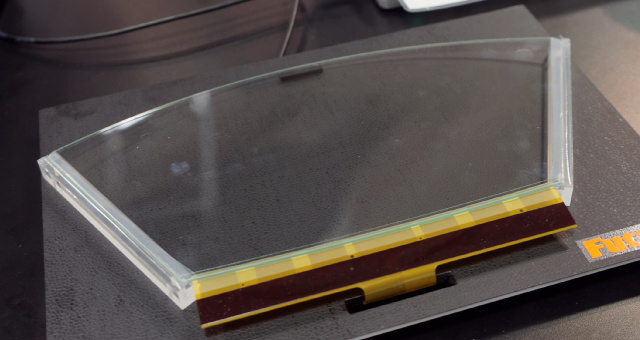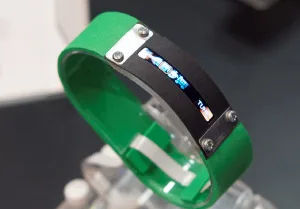3M was showing a 31″ 2560 x 1440 monitor reference design that supports 94% of the Rec 2020 using the company’s QD-based QDEF film in an edge-lit configuration and using an optimised DBEF. Brightness is 300 cd/m² and lifetime is 30,000 hours (at 400 cd/m²). Another demonstration was a 27″ UltraHD monitor which had 350 cd/m² of brightness, but using just 33.5W. 3M used a UMF reflective polariser.
A 50″ UltraHD TV reference design has 300 cd/m² of output, but only takes 38W using a DLF reflective polariser. The company also had a 49″ mirror display using a 3M reflective polariser and a bonded panel (using 3M OCA). Brightness goes up to 300 cd/m² compared to 180 cd/m² without these technologies. Reflectance is claimed at 60%.
3M also had a 120″ UltraHD panel with 384 local dimming zones for HDR support.
One of the highlights for us of ISE was the fine pitch LED technology from DeepSky, based in Hong Kong. The firm had a corner of the Solomon Systems booth as it uses an exclusive chip, developed with Solomon to drive its LEDs. The company is promising a new 2 sq metre FullHD panel when the ASIC starts to ship, with improved colour and 2,200 cd/m² of light output. The Deepsky system looks different to other configurations and this is partly because of the delta pixel configuration that is used (and used to be used on CRTs because it gave good video performance). DeepSky claims 15 bits of control of brightness to support high dynamic range.
ELO was showing the latest version of its SAW acoustic technology which uses a new controller chip that is more sensitive. The company still finds a good market for SAW technology, despite the shift to PCap, especially in medical, kiosk and ATM applications where the limit of two touches is not a barrier. The company told us that the resistive market remains stable and, again, medical is one continuing application.
Futaba, which traditionally has promoted VFD displays at the SID, was highlighting new PMOLED displays which are available on plastic substrates from 0.7″ to 1.84″ and intended for automotive and other applications. The company can also make them on glass. Next, we looked at a fan-shaped touch sensor that may find use in automotive applications. Futaba was also showing a novel 3D touch controller (without a display) which it is promoting for automotive and other control applications.

GLT is a US developer of edge backlighting and light guides. From supplying the commodity markets, the company has recently focused on automotive, keyboard backlighting and general lighting. The company was emphasising wearables at the show and it has developed BLUs for very small and thin fitness devices and watches that can produce up to 13K cd/m², but can be very thin. AR & VR setups are also a target market as they have to be able to compete with the real world and that means high brightness. The firm has also developed light-guide based LED lights for baseball hats! For automotive applications, brightness up to 150 cd/m² is desired in backlighting and lighting.
nVerPix showed its CNT-based OLET display (CN-VOLET AMOLED Will be at SID Display Week), which won the Best Prototype award. The unit was a mono-colour (green) display, measuring 2.5″ with 320 x 240 resolution. Aperture ratio was 70% and brightness was ‘over 500 cd/m²’.
Unilumin, the developer of discrete LED displays, was at the show with some good looking displays. It had no news, although we may hear some at Infocomm, but we noted one point that may be a challenge for its ‘monolithic’ FullHD LED displays – the current weight. The 110″, which is 1.5mm pitch, weighs 110Kg, the 138″, 170Kg, but the 165″ weighs a full 245Kg – a quarter of a tonne!
VESA was at the show to support the DisplayPort interface. The group highlighted to us that the Forward Error Correction that is in DP1.4 improves the accuracy by reducing errors not only in content that uses DisplayStream Compression (DSC), but also in regular DisplayPort content. We heard at several sites that eDP is becoming much more accepted in the market.

